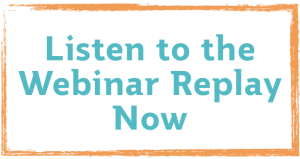On Wed., Aug. 24, Chris Syme presented a webinar called “Turn Your Social Media Channels Into Shopping Channels.”
You’ll want to check out the resources Chris mentioned during the webinar:
Read Chris’ blog post about this topic:
By Chris Syme, founder of CKSyme Media Group
It should come as no surprise that authors will never sell as many books on social media as they do via booksellers. Facebook will never be Amazon. But guess what—Amazon is not marketing your books for you. And you may be surprised to know that some social media channels do a very good job selling books. The trick is knowing which channels are good at selling and then optimizing those channels for book sales. There are three easy steps you can use as a checklist to find out if you are taking full advantage of social media to sell your books.
Step One: Find Your Audience
Do you know where your readers are? Do you know what makes them click, like, comment, and share? If you don’t, you need to do some audience research. General audience research about social media audiences can be found on Pew Internet Research for free. They are a nonprofit research company that has the most reliable information on where people are according to gender, age, education level, financial information, and more. Their annual report has specific channel breakdowns so you can find out who is on what channel. You should also survey your own fans. You can send out a survey asking your readers what channels they frequent on social media along with their book buying habits.
In addition, you’ll want to learn the differences in behavior on the various social media channels. Also, you should be aware of which social media channels score highest in selling and which might be a waste of your time.
Step Two: Engage Your Readers
Engagement rates correlate to sales rates. Authors that work at creating engaging content and let their fans into their world are going to do a better job of selling books. You can’t use social media strictly as a sales billboard. You earn the right to sell by giving value to your fans. The more you give, the more they will let you sell.
Engagement starts with the right attitude. Doctor Josh Axe who built a nutrition and health empire on Facebook revealed his secret saying, “You have to let them know you.” Readers need to be treated like friends. Your content needs to speak to their needs, not yours. The more you know about your audience, the more your content will reflect their needs and desires. And yes, they do want to know you better. You’ll never reach your engagement potential unless you are willing to build a connection with your audience. If all you do is talk at them, you’re defeated before you start. Good content invites two-way communication. Iconic romance writer Beverly Jenkins said it best at this year’s Romance Writers of America conference: “Get over yourself and get out there.”
Creating great content is not a mystery. It just takes a pinch of marketing savvy and a commitment to do the work. I use a cheat sheet called the Social Media Success Checklist that walks authors through how to make sure posts are ready to engage before they click. The four columns on the sheet that I’ll show you in my upcoming Bublish “Lunch & Learn” Webinar on August 24 are based on research done by well-known marketing companies on the most popular types of social media posts. Just remember: engagement before selling. Trying to sell without engaging your fans first will be an exercise in frustration. You’re more likely to buy from that person who comes to the door selling magazines if they are your friend rather than a random stranger.
Step Three: Optimize Your Pages
No matter if it’s Facebook, Pinterest, Twitter, or Instagram, there are tips and tricks you can use to provide opportunities for visitors to buy your books without posting, “Please buy my books.” Facebook is the clear winner in this category but you can spruce up all your pages to present clear options for visitors to buy your books without feeling pushy.
Some of these tips start on your personal profiles and some are built in apps for business pages only. Don’t forget your cover photos and pinned posts. Where are your URLs sending people? Are you gathering email sign-ups on your social media pages?
At the beginning of this piece I mentioned that success comes with a pinch of marketing savvy and a commitment to do the work. No matter how many tips and tricks I show you, they are not going to magically appear on your social media pages. Yes, there is a learning curve up front. But once you implement the changes to get your social media pages geared up for selling without being pushy, the system is very easy to maintain.





